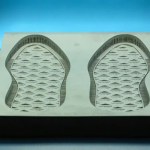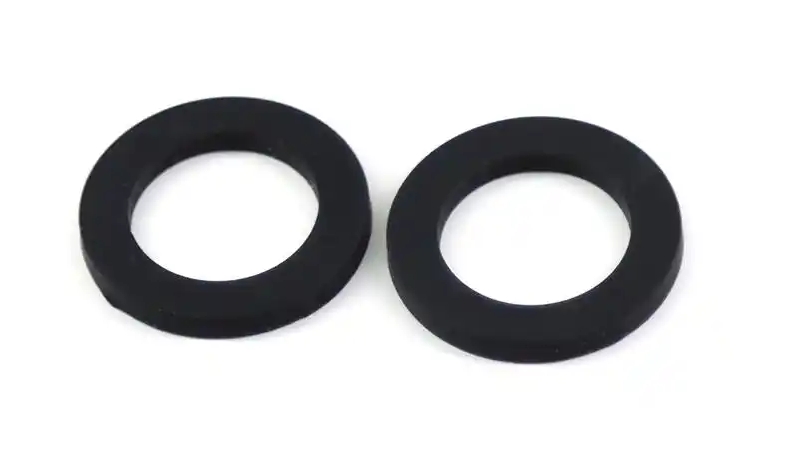
Breakthrough the hardware bottleneck of 3D printed EVA shoe molds
2025-04-25
3D Printing Surgical Medical Application Cases
2025-04-25HXC Company discusses how to thin silicone products?
During the production process of silicone products, it is sometimes difficult to thin them, which not only affects the appearance and quality of the product, but may also lead to a decrease in production efficiency and an increase in costs. In order to further explore why silicone products cannot be pressed thin, we need to conduct a comprehensive analysis from multiple aspects such as the production process, mold design, exhaust system, mold structure, and human operation of silicone products.

The production process of silicone products has a crucial impact on their thickness control. The molding process of silicone products mainly includes compression molding, injection molding (injection molding), extrusion molding, rolling, pouring, and coating. Among them, compression molding is the most commonly used process, which involves placing mixed silicone raw materials into molds and vulcanizing them under heating and pressure conditions.
The control of temperature, pressure, and vulcanization time is crucial in this process. If the temperature is not high enough or the pressure is not high enough, the silicone raw material may not be fully vulcanized, resulting in uneven thickness or difficulty in thinning the product. In addition, if the vulcanization time is insufficient, it may also lead to the presence of uncured parts inside the silicone product, thereby affecting its overall performance and thickness control.
Injection molding is a high-precision production process for silicone products. It is formed by injecting silicone raw materials into a mold under heating and cooling conditions. This process requires high precision of the mold and performance of the injection molding machine, but once controlled properly, it can produce silicone products with uniform thickness and high dimensional accuracy. However, if the mold design is unreasonable or the injection molding machine parameters are set improperly, it may also make it difficult to thin the silicone products.

In addition to production processes, mold design is also an important factor affecting the thickness control of silicone products. The design of the mold not only determines the shape and size of the silicone product, but also directly affects its thickness and molding effect. If the mold design is too large or the structure is complex, it may cause poor flow or uneven filling of silicone raw materials in the mold, thereby affecting the thickness control of the product. In addition, the accuracy and manufacturing quality of the mold directly affect the molding effect and thickness uniformity of silicone products.

The lack or unreasonable exhaust system is also an important reason why silicone products are difficult to thin. In the molding process of silicone products, if the gas inside the mold cannot be discharged in a timely manner, it may cause bubbles or defects inside the product, thereby affecting its thickness control and overall performance. Therefore, in mold design, it is necessary to fully consider the setting and rationality of the exhaust system to ensure that the silicone raw material can fully fill the mold and smoothly discharge the gas.
The complexity of mold structure is also a factor affecting the thickness control of silicone products. For silicone products with complex structures, the molding process may require multiple molds or steps to complete. This not only increases production costs and process difficulty, but may also lead to problems such as deformation or uneven thickness of the product during the molding process. Therefore, in mold design, it is necessary to fully consider the structure and molding requirements of the product, in order to simplify the mold structure and improve molding efficiency.

Human operation is also an important factor affecting the thickness control of silicone products. In the production process, the skill level, operating habits, and quality awareness of the operators will directly affect the molding effect and thickness control of the products. For example, in the process of compression molding, if the operator's control of temperature, pressure, and vulcanization time is not accurate or stable enough, it may lead to uneven thickness or difficulty in thinning the product. Therefore, strengthening the training and skill improvement of operators is of great significance for improving the thickness control level of silicone products.
The reasons why silicone products are difficult to thin during the production process are multifaceted, including production technology, mold design, exhaust system, mold structure, and human operation. To solve this problem, we need to start from multiple aspects, such as strengthening the optimization and control of production processes, improving the accuracy and manufacturing quality of mold design, perfecting the setting and rationality of exhaust systems, simplifying mold structures and improving molding efficiency, and enhancing the training and skill improvement of operators. Only in this way can we produce silicone products with uniform thickness and stable quality, meeting market demand and customer expectations.

In the actual production process, we can further improve the thickness control level of silicone products by optimizing production process parameters, such as increasing vulcanization temperature, increasing vulcanization pressure, and extending vulcanization time; The second is to strengthen the precision of mold design and manufacturing quality control, ensuring that the precision and manufacturing quality of the mold meet production requirements; The third is to improve the setting and rationality of the exhaust system to ensure that the gas inside the mold can be discharged in a timely manner; The fourth is to simplify the mold structure and improve molding efficiency, reduce production costs and process difficulties; The fifth is to strengthen the training and skill improvement of operators, and enhance their operational level and quality awareness. Through the implementation of these measures, we can further improve the thickness control level of silicone products and provide the market with higher quality and more stable products.





